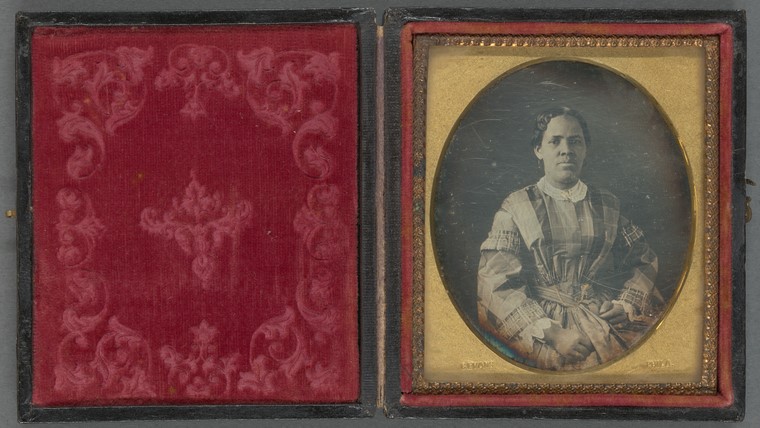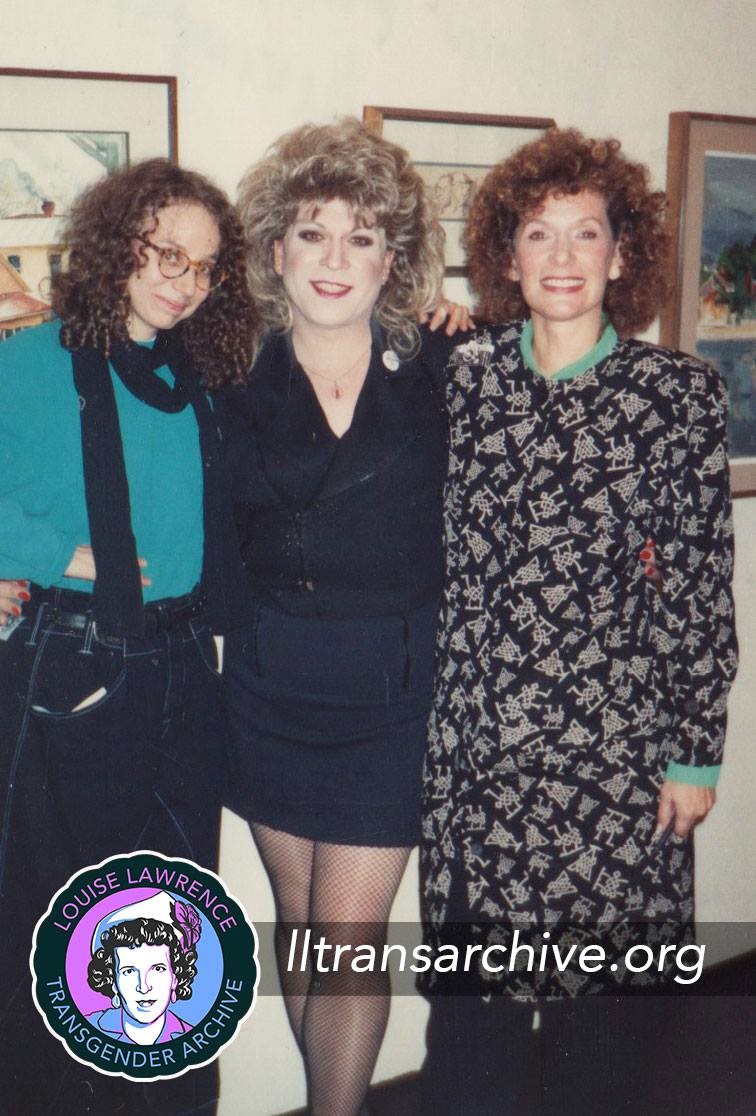PRESERVATION

Cinema’s First Nasty Women
The Women Film Pioneers project, out of Columbia University, released a four-disc DVD set of Cinema’s First Nasty Women, a collection of 99 rarely-seen silent films about “feminist protest, anarchic slapstick destruction, and suggestive gender play.” The much-lauded effort spans both American and European films from 1898 to 1926 sourced from 13 film archives and libraries around the globe. The resource is now available, alongside numerous essays and complementary open-access research tools, via the project’s website.
Artificial Intelligence, Machine Learning, and Digital Archives
A wide range of parties continues to experiment with artificial intelligence (AI) and machine learning (ML) for varied preservation applications. Last year, Peter Jackson’s The Beatles: Get Back gained popular attention for using machine learning for “demixing”—disentangling multiple audio sources on a single tape. By training a computer to recognize and isolate vocals and different instruments, the team was able to recover conversations that the cheeky lads from Liverpool intentionally obscured with strumming and loud amps when they were filmed for the 1969 Let it Be documentary. More recently, computer scientists at the Graz University of Technology working with HS-Art, a historical restoration company, announced the development of a protoype AI application for “user-guided” colorizing of black and white film footage that incorporates human feedback to increase the authenticity of color selection for historical images.
In addition to recovering historical audio and wading into the fraught waters of colorization, AI has raised a host of questions around copyright, preservation practices, and persistent barriers to widescale implementation. In March, the U.S. Copyright Office launched a new initiative examining AI-related issues ranging from the use of copyright-protected work to train AI to the copyright status of AI-generated works. Internationally, the InterPARES TRUST AI—an enormous consortium of multinational teams trained in archival science, AI, cybersecurity, records management, law, information science, and ethics—is in the midst of a 5-year project examining the potential of AI “to support the ongoing availability and accessibility of trustworthy public records” via a range of applications in records creation, appraisal, acquisition, arrangement and description, and access.
Despite these enthusiasms over the potentials of AI, it may be some time before the technology is adopted for widescale implementation. The Oregon State Archives, in a rare example of an institution abandoning plans to adopt ML, cited unexpectedly exorbitant costs (with one bid exceeding the archives’ entire biennial budget three times over). Even this “pivot” away from ML, however, was cast as a temporary delay in an inevitable embrace of AI for managing increasingly unwieldy electronic data.
Preservation amid Disaster
Appalshop—a media and arts education center founded in 1969 to document Appalachia communities and foster local arts practice—continues recovery efforts following 2022’s catastrophic 1000-year flood which overtook their warehouse and vault. The impacted collections include extensive sound recordings, film, photographs, and video documenting a century of coal mining, labor history, and religion and folklore. Although the intensive recovery process will take time, Appalshop recently shared progress by way of an excerpt of a restored recording of fiddler Oaksie Caudill playing the traditional folksong "Sourwood Mountain.” To learn more about its recovery and fundraising efforts, follow Appalshop on twitter. To explore the organization’s documentation of the flood itself, see the EKY and SWVA Flood Community Archive.
COPYRIGHT

The end of March saw a federal judge rule against the Internet Archive, a nonprofit organization that archives “the Internet itself,” in a recent lawsuit, Hachette v. Internet Archive. The Internet Archive holds that their practice of scanning and lending books digitally, which they expanded during the COVID-19 pandemic, warrants protections similar to libraries. Four book publishers including Hachette, Harper Collins, Wiley, and Penguin Random House brought a lawsuit against the Archive’s Open Library program, saying that the practice violates copyright law and constitutes “willful digital piracy on an industrial scale,” according to the original complaint. The Internet Archive’s program operates differently from other digital lending services, such as OverDrive (which powers the Libby app), which negotiate licensing deals with publishers. The Internet Archive plans to appeal the decision, arguing that their library program represents Fair Use. Whatever the outcome, the ongoing legal battle represents a shifting landscape of digital acquisitions and access.
In keeping with these ever-evolving questions of digital access, Nintendo has permanently closed the eShop for its Nintendo 3DS and WiiU videogame consoles as of March 27, 2023. The Nintendo eShop served as an online marketplace for purchasing and downloading digital games on those platforms, including many in the Pokémon franchise and remastered Legend of Zelda games. The shop’s closure means that many games will now only be available if one can acquire their physical cartridges or discs. The 3DS and WiiU eShop closure also calls into question the longevity of previously acquired digital files, as the digital games can now no longer be repurchased should the console or storage device they are hosted on break or otherwise obsolesce.
You might recall our previous news item outlining Nintendo’s litigious history of digital copyright protection and celebrating a Fair Use victory for an independent YouTube video essayist. Another independent YouTube collective, The Completionist, documented the process (as well as the emotional and financial expense) of downloading every game available on the Nintendo 3DS and WiiU eShops before they shut down for good. The Completionist team donated the collection to the Videogame History Foundation and hosted a charity event to help support the cost of the acquisition—over $23,000 in game value alone—in April on Twitch.
In a happier marriage of AI and copyright news, perhaps you’d like to take a bit of time playing with emulated calculators? The Internet Archive has released a new collection of calculator emulations, which allows your computer to replicate the function (and, in some cases, feel) of a TI-89 calculator – complete with games. And you don’t even have to go to your high school calculus class to use them!
ACQUISITIONS

Joan Didion, East Village Eye, Metropolitan Opera Wax Cylinders, and Daguerreotypes at the New York Public Library
It has been a banner few months for the New York Public Library (NYPL), which has announced a series of important acquisitions with wide-ranging significance for media and cultural historians. The Joan Didion/John Gregory Dunne archives include correspondence with figures ranging from Norman Lear and Nora Ephron to Allen Ginsberg and Justice Anthony Kennedy, screenplay drafts, and photographs documenting their independent and collaborative work as two key figures of post-war American literary and journalism circles. The East Village Eye collection includes a full run of the 1980s newspaper that documented everyday life and culture in the NYC neighborhood (punk and hip-hop scenes, the rise of HIV/AIDS, the emergence of figures like Basquiat and Fab Five Freddy, dance halls, stores, and other community spaces) as well as business records, photography, correspondence, and original art. The Library also completes its collection of extant “Mapleson Cylinders,” rare live opera recordings on wax cylinders made by the librarian of the Metropolitan Opera, Lionel Mapleson, in the early 1890s and 1900s. In addition to 140 cylinders, the collection now includes Mapleson’s diaries and a cylinder machine Thomas Edison gifted Mapleson. The NYPL also announced the recent digitization of 17 of its oldest daguerreotype portraits to enable online access.
Victoria and Albert Museum to Acquire the David Bowie Archives
Ground Control to Major Tom: The Victoria and Albert Museum (V&A) in London announced in February that they will be acquiring the David Bowie archives from the Bowie estate. The gift is supported by a £10m donation from the Blavatnik Family Foundation and the Warner Music Group. The collection spans more than 80,000 items from the legendary musician’s nearly six-decade career, including costumes, letters, instruments, and personal notes. The museum previously hosted an exhibition dedicated to Bowie in 2013, David Bowie Is..., which established a partnership between the V&A and the Bowie Archive.
V&A Director Tristram Hunt said of the collection, “The V&A is thrilled to become custodians of [Bowie’s] incredible archive, and to be able to open it up for the public. Bowie’s radical innovations across music, theatre, film, fashion, and style—from Berlin to Tokyo to London—continue to influence design and visual culture and inspire creatives from Janelle Monáe to Lady Gaga to Tilda Swinton and Raf Simons.”
The V&A plans to open a center dedicated to Bowie following the acquisition in 2025, called the David Bowie Center for the Study of Performing Arts. The Center will be part of the V&A East Storehouse, an extension of the museum’s collection of art, design, and performance currently under construction in East London.
Major League Baseball Collections at the Library of Congress and Society for American Baseball Research
The Society for American Baseball Research (SABR) announced in January of this year that they acquired The Rucker Archive, “the most extensive personal collection of vintage imagery and Americana online,” including a significant number of historical baseball photographs, advertisements, and player cards. The collection will lend insights into the careers and legacies of many baseball players, from Babe Ruth to Hank Aaron and Jackie Robinson. SABR is currently looking for volunteers to help review and tag the photos with metadata.
To celebrate Major League Baseball’s Opening Day (“Go Dodgers!” says Archival News’s Kat Brewster), the Library of Congress has released a new digital collection of Early Baseball Publications. The collection will continue to grow over time, and currently provides high-definition scans of more than 120 early baseball-related items including sheet music, magazines, and game guides. This digital collection will complement the online Spalding Baseball Guides resource, which will be retired once it has been fully integrated into the new collection. Learn more here.
IN BRIEF

Of Note
- The Vallejo Louise Lawrence Transgender Archive reopened on the Trans Day of Visibility, March 31, 2023, after a 2022 closure. The archive was forced to cease operations for a year, after an SUV drove into the building. The Northern California venue seeks to “increase the understanding of transgender people and encourage new scholarship by making transgender historical materials available to students, scholars, and the public.” Students, scholars, and independent researchers were welcomed back to the center at an open house celebration, and all are encouraged to make research appointments or explore the archive’s online resources.
- The Mellon Foundation has awarded the Society of American Archivists Foundation a $98,000 grant to develop a pilot program focused on “Indigenous needs and perspectives in the archives profession.” The program is designed to assist in “reframing Western-created 'best practices' in archives and recentering Indigenous values and traditional stewardship practices” for Tribal archivists, Tribal historic preservation officers, museum professionals, and other leaders in the archival sciences who are interested in community-based approaches to responsible stewardship.
- The Nitrate Picture Show, the only film festival dedicated to screening films on nitrate, is back for its seventh year to celebrate the art of film conservation. The festival kicks off on June 1 at the George Eastman Museum in Rochester, New York, and provides film enthusiasts and conservationists a rare chance to watch nitrate films. Learn more about the lineup of films, speakers, and events on the festival’s website, here.
New Resources
- Stanford University’s Center for Human Rights and International Justice announces the launch of the The Taube Archive of the International Military Tribunal at Nuremberg, 1945-46. Comprising almost 10,000 items, the online collection provides public access to documents, films, and audio recordings of the Nuremberg Nazi Trials that were previously limited to experts and others who could travel to the Hague and elsewhere to access the physical records.
- Villon Films, the independent film production and distribution company founded by Peter Davis with a focus on socio-political documentary, announced a new website designed to enable filmmakers, researchers, and students to engage the company’s extensive materials relating to government, culture, health, history, television documentary, and South Africa under apartheid. The site includes 400 films, ephemera, and contextual essays written by Davis, and additional materials continue to be added.
- The University of Winnipeg Archives offer a delightful new resource for anyone interested in commercials, business history, material culture, and local television. The Kern-Hill Furniture Co-op fonds includes 23 cassettes worth of TV ads spanning 1998-2001 promoting the local furniture business.
- As we wait for the National Archives to finish processing the 41,000 rolls of microfilm that comprise the 1960 Census (scheduled to be released publicly in 2032), Claire Kluskens’s History Hub Census series provides users overviews of the digitization process, as well as highlights of the 1950s Census data published online just last year.
- This summer, the National Museum of American History will open its doors to researchers who want to explore the recently acquired archive of Robert “Mack” McCormick, a self-trained folklorist who documented the work and lives of hundreds of early- and mid-century blues musicians. One of the largest blues archives in the world, the collection includes 165 boxes of unpublished manuscripts, research notes, photographs, ephemera, business records, and other materials, as well as 590 reels of sound recordings.
“Archival News” reports on recent news highlights from the media archives community for the Journal of Cinema and Media Studies readership. Some information in this column comes courtesy of the Association of Moving Image Archivists (AMIA) listserv, along with institutional newsletters, websites, and press releases. This column is updated quarterly. We welcome contributions. Please send to Kit Hughes and Kat Brewster at [email protected].

